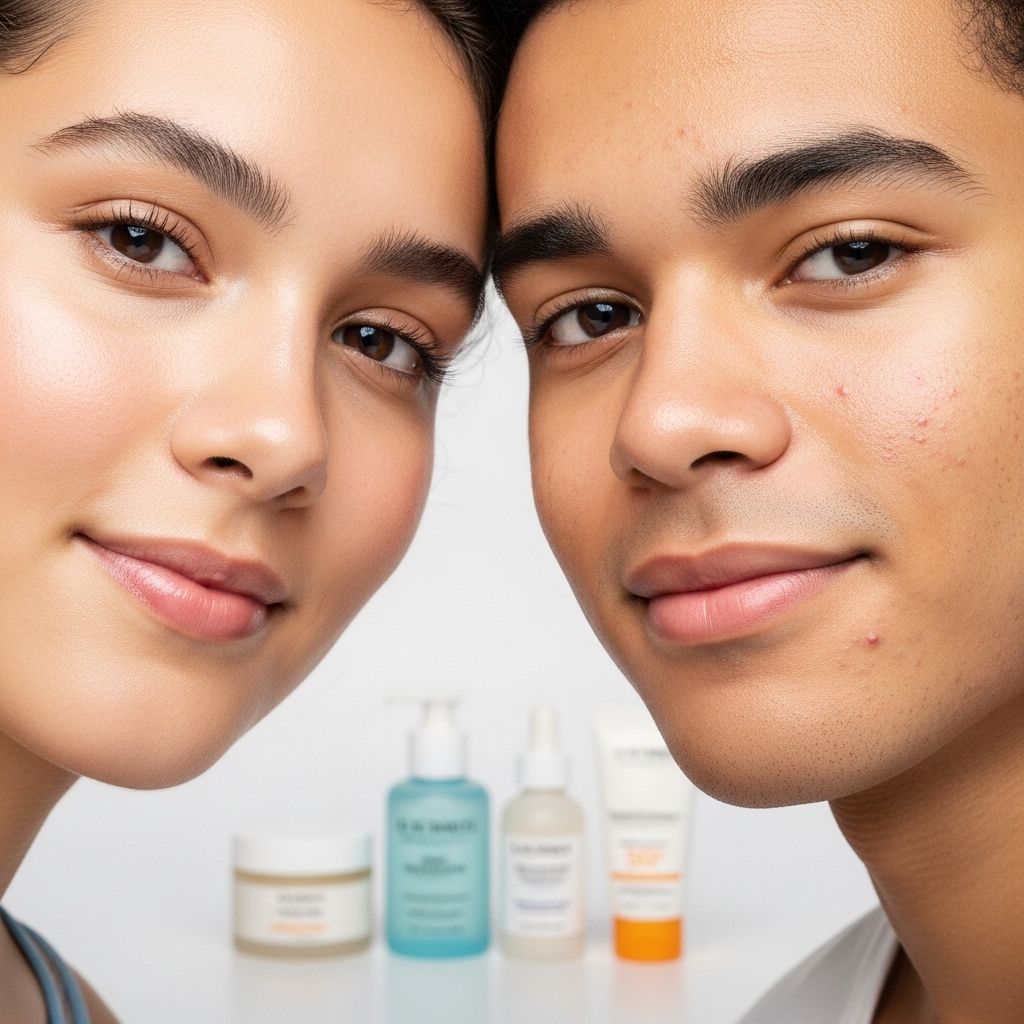Skincare for Trans Teens: Hormone Therapy
Tailored solutions help soothe breakouts, replenish moisture, and even out skin tone.

Table of Contents
- Introduction
- Hormone Therapy: An Overview
- Skin Challenges During Hormone Therapy
- Effective Skincare Treatments
- Frequently Asked Questions
Introduction
For many transgender teens, hormone replacement therapy (HRT) is a crucial step in their journey to align their physical appearance with their gender identity. However, this transition can also involve significant changes in the skin, including acne, hyperpigmentation, and hair loss. Understanding these challenges and knowing effective skincare strategies can help manage these side effects and improve overall well-being.
Hormone Therapy: An Overview
Hormone therapy for transgender individuals typically involves taking hormones that are traditionally associated with the opposite sex. For transgender men (female to male, FTM), testosterone is commonly used, while transgender women (male to female, MTF) often take estrogen. These hormonal changes can lead to various skin-related side effects due to the body’s adjustment to new hormone levels.
Testosterone-Based HRT
Testosterone can cause an increase in sebum production, leading to acne and oiliness. This effect is often most pronounced in the first six months of therapy. Over time, the severity of acne may decrease as the body adjusts to the new hormone levels. Additionally, testosterone can stimulate hair growth, contributing to conditions like hirsutism in androgen-sensitive areas.
Estrogen-Based HRT
Estrogen, on the other hand, tends to reduce sebum production, which can lead to dry skin. It may also increase skin hydration and elasticity, potentially reducing wrinkles. However, estrogen can cause hyperpigmentation, a condition characterized by darkened skin patches, such as melasma. This condition is particularly common in areas like the face.
Skin Challenges During Hormone Therapy
The skin changes experienced during hormone therapy can vary significantly between individuals. Here are some common challenges:
- Acne: Commonly seen in those taking testosterone, acne can be severe during the initial months of therapy but may improve over time.
- Hyperpigmentation: Often associated with estrogen therapy, this condition can cause noticeable dark patches on the skin.
- Hair Loss: Testosterone can lead to male pattern hair loss (MPHL) in transgender men, while estrogen may cause female pattern hair loss (FPHL) in transgender women.
- Dryness and Sensitivity: Estrogen can cause dry skin, making it more sensitive to certain products or environmental factors.
Effective Skincare Treatments
Managing skincare during hormone therapy involves a combination of preventive measures and targeted treatments. Here are some strategies to consider:
- Topical Treatments: For acne, topical retinoids or benzoyl peroxide can be effective. In cases of hyperpigmentation, products containing vitamin C and niacinamide may help.
- Moisturizers: Using hydrating moisturizers can combat dryness and sensitivity caused by estrogen.
- Consult a Dermatologist: Professional advice is crucial for managing severe skin conditions or persistent issues.
- Sun Protection: Sunscreen is essential to prevent further hyperpigmentation and protect the skin from UV damage.
Frequently Asked Questions
Q: How long does it take for skin issues to improve after starting hormone therapy?
A: Skin issues like acne often peak in the first six months of hormone therapy and may gradually improve over the next one to two years as the body adjusts.
Q: Can hormone therapy cause permanent skin damage?
A: While hormone therapy can cause temporary skin issues, permanent damage is less common. However, scarring from acne or hypertrophic scarring from surgeries can occur if not managed properly.
Q: What are some home remedies for managing skin dryness during estrogen therapy?
A: Using gentle moisturizers, avoiding harsh skincare products, and maintaining good hydration can help manage dry skin.
Conclusion
Skincare for trans teens undergoing hormone therapy requires understanding the potential effects of these treatments and implementing effective strategies to manage skin challenges. By being proactive and seeking professional advice when needed, individuals can navigate these changes with confidence and improve their overall skin health.
References
- https://pmc.ncbi.nlm.nih.gov/articles/PMC9942180/
- https://www.businessinsider.com/hrt-skin-issues-in-trans-people-how-to-combat-effects-2021-6
- https://www.skinandme.com/the-dose/ask-a-clinician-what-happens-to-your-skin-when-you-transition/
- https://www.healthline.com/health/skin/hrt-skin-effects
- https://pmc.ncbi.nlm.nih.gov/articles/PMC9552673/
- https://www.aad.org/public/diseases/acne/derm-treat/gender-affirming-testosterone-therapy
- https://aedit.com/aedition/skin-concerns-during-gender-transitioning-confirmation
Read full bio of Sneha Tete












